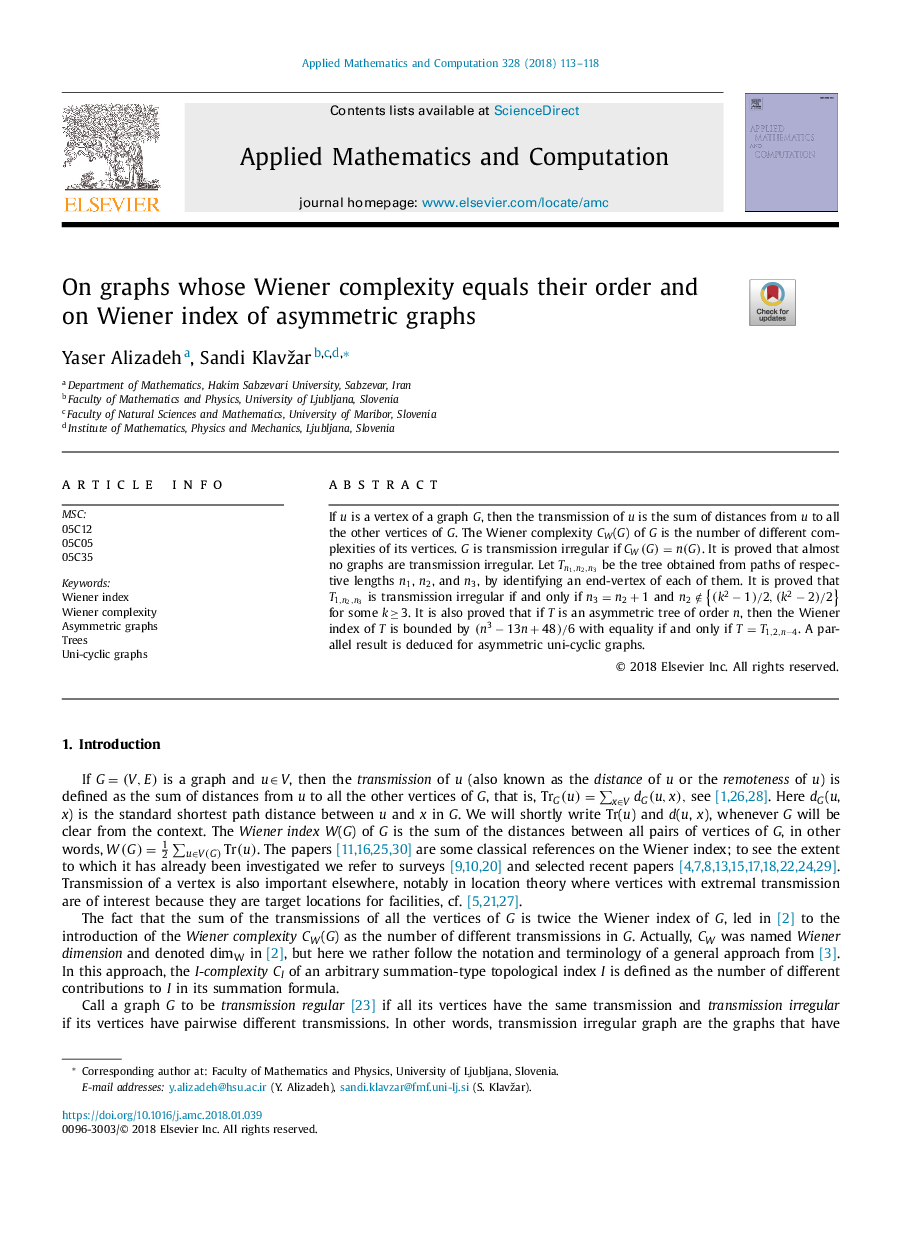| Article ID | Journal | Published Year | Pages | File Type |
|---|---|---|---|---|
| 8901085 | Applied Mathematics and Computation | 2018 | 6 Pages |
Abstract
If u is a vertex of a graph G, then the transmission of u is the sum of distances from u to all the other vertices of G. The Wiener complexity CW(G) of G is the number of different complexities of its vertices. G is transmission irregular if CW(G)=n(G). It is proved that almost no graphs are transmission irregular. Let Tn1,n2,n3 be the tree obtained from paths of respective lengths n1, n2, and n3, by identifying an end-vertex of each of them. It is proved that T1,n2,n3 is transmission irregular if and only if n3=n2+1 and n2â{(k2â1)/2,(k2â2)/2} for some kâ¯â¥â¯3. It is also proved that if T is an asymmetric tree of order n, then the Wiener index of T is bounded by (n3â13n+48)/6 with equality if and only if T=T1,2,nâ4. A parallel result is deduced for asymmetric uni-cyclic graphs.
Related Topics
Physical Sciences and Engineering
Mathematics
Applied Mathematics
Authors
Yaser Alizadeh, Sandi Klavžar,
